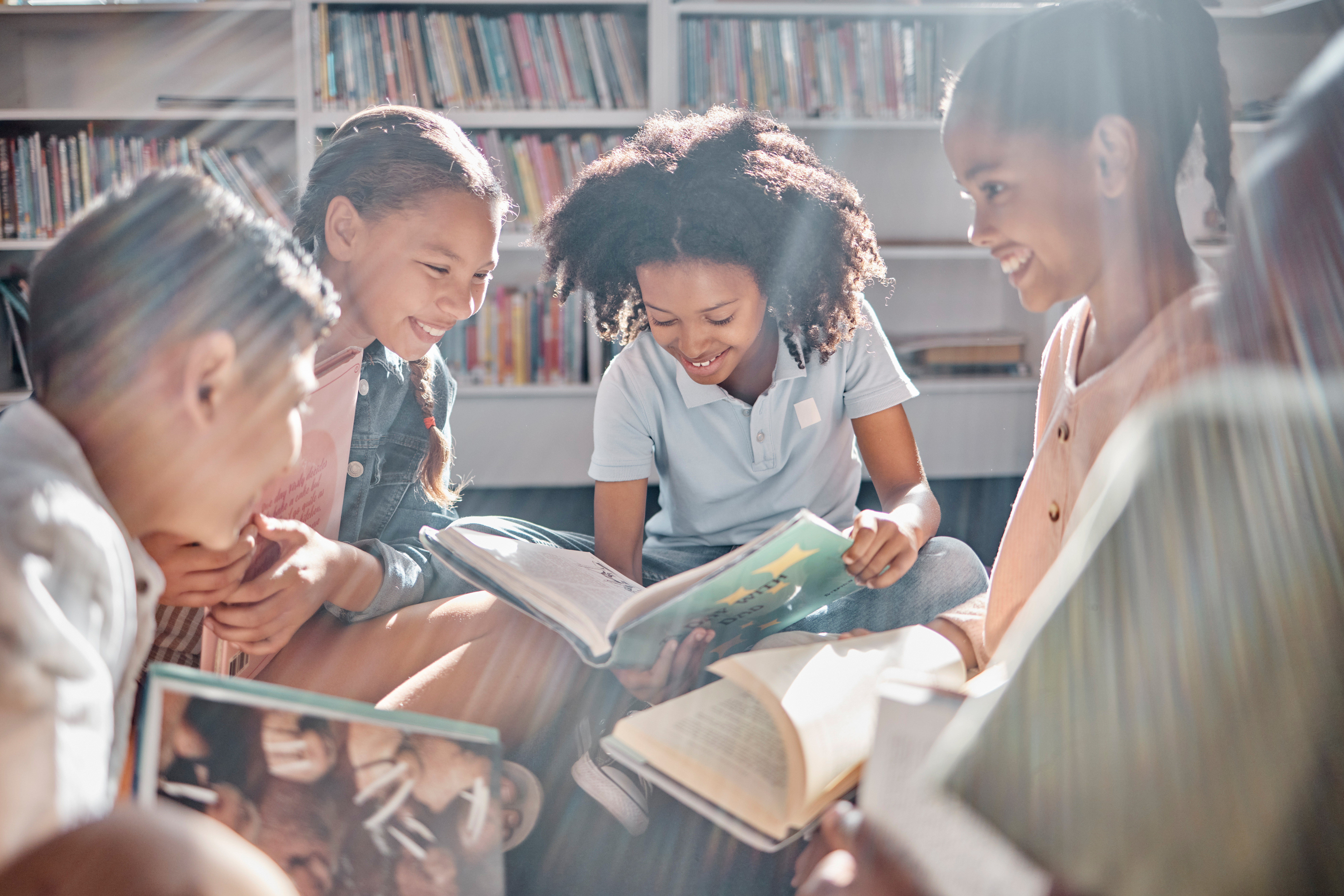Creating Welcoming Literacy Landscapes: Cultural Inclusion and Joyful Free Reading
Reading and writing classrooms around the world are filled with unimaginable amounts of potential to improve the academic, linguistic, and social success of multilingual learners of English (MLEs). In this post, we share practical ways to intentionally create more welcoming reading and writing experiences for MLEs in elementary and secondary schools.

Creating a Welcoming Literacy Environment in Elementary School: Cultural Inclusion
Those who’ve been in education for at least a year have likely heard the term culturally responsive. One might consider every literacy landscape as culturally responsive. The questions we have to ask are:
-
- Who is the literacy landscape responsive to?
- Who is valued?
- Whose ideas are heard?
- Which language(s) are amplified?
A welcoming literacy landscape will move toward “culturally inclusive” practices. Classrooms like these roll out the red carpet to welcome each student and hear all the voices. A culturally inclusive approach is a way of being and teaching that centers students’ voices and experiences. Therefore, it is not a program or a checklist but instead is a particular mindset that constantly communicates to students through resources, literature, and instructional practices. It tells students:
This classroom needs you because of who you are, the ideas you share, the experiences you’ve had, and the language(s) you speak.
Exemplifying Welcoming Literacy Landscapes
|
Resources |
Literature |
Instructional Practices |
|
Bulletin boards include images of diverse students and families. Student work is prominently displayed on the classroom walls. Languages other than and including English are on display.
|
Teachers read aloud from a variety of books. Students are offered books with characters from diverse backgrounds. Books are carefully selected to encompass many background experiences (windows and mirrors) and languages. |
Teacher talk is reduced to encourage more student voice. Lessons are built to include peer interaction. Thinking and progress are valued over perfect answers.
|
Creating a Welcoming Reading Environment in Secondary School: Joyful Free Reading
As students progress in the education system, the demands to cover all the curricular content in English class can crowd out the practice of free reading for joy. The curriculum often mandates the texts that students must read because they have to read a text related to a specific concept or learn content by reading particular articles. In these instances, students understandably have little choice in the text they read.
However, teachers can carve out 10–15 minutes on a rotating basis for students to read a novel of their choice for the sole purpose of enjoyment. After the free reading time, students continue to engage with the texts directed by the curriculum.
Why Is Free Reading Important?
The reason to carve out and protect time for free reading is to have MLEs associate reading with being a fun and affirming hobby. We want MLEs to experience being immersed in a book, willingly carried away by the characters and their challenges. Multilinguals develop the realization that reading, just like other hobbies — such as playing sports, listening to music, and socializing with friends — enriches their lives. When students add reading to their list of hobbies, it diversifies the options that cultivate joy.
Additionally, reading becomes a life-rehearsal opportunity. As students follow the characters through their ups and downs and life-fork moments, MLEs get to witness the consequences and celebrations of their decisions. By reflecting on the characters’ decisions and the results, MLEs contemplate if these actions are ones they would take and if the effects are desirable. Parents and relatives often try to impart these life lessons to their teens, who, just as often, swat these suggestions away. Within the intimacy of a book, adolescent MLEs more willingly and subconsciously receive these lessons as they are emotionally enthralled with their characters. Life rehearsal opportunities serve as “sliding glass doors” (Sims-Bishop) that transport MLEs into their characters’ lives, removing the vale between the readers and the characters.
Windows, Mirrors, and Sliding Glass Doors
Continuing with the windows, mirrors, and sliding glass doors metaphor for books, adolescent MLEs see outside of their lives through books just as windows enable us to see the world outside our homes. Books take them to communities, cities, and regions of the world they would otherwise never have journeyed. Peering into these new worlds helps MLEs learn and appreciate other cultures as well as have pride in their own culture.
Finally, and possibly most important, books provide teen MLEs with mirrors. As the adolescent years are devoted to developing one’s identity, MLEs who read get to see themselves in their characters. The characters can affirm that the MLEs’ experiences are valid and worthy of attention. Just as we see ourselves better in the mirror, MLEs come to see themselves and their lives with greater clarity through the books they read. Books help teen MLEs know they are not alone in their experiences, no matter how unique they might feel.
Looking Ahead
Next month’s post builds on the benefits of creating space for joyful free reading in secondary school. We cannot have structures for free reading without anchoring ourselves and our students to its generous benefits.


